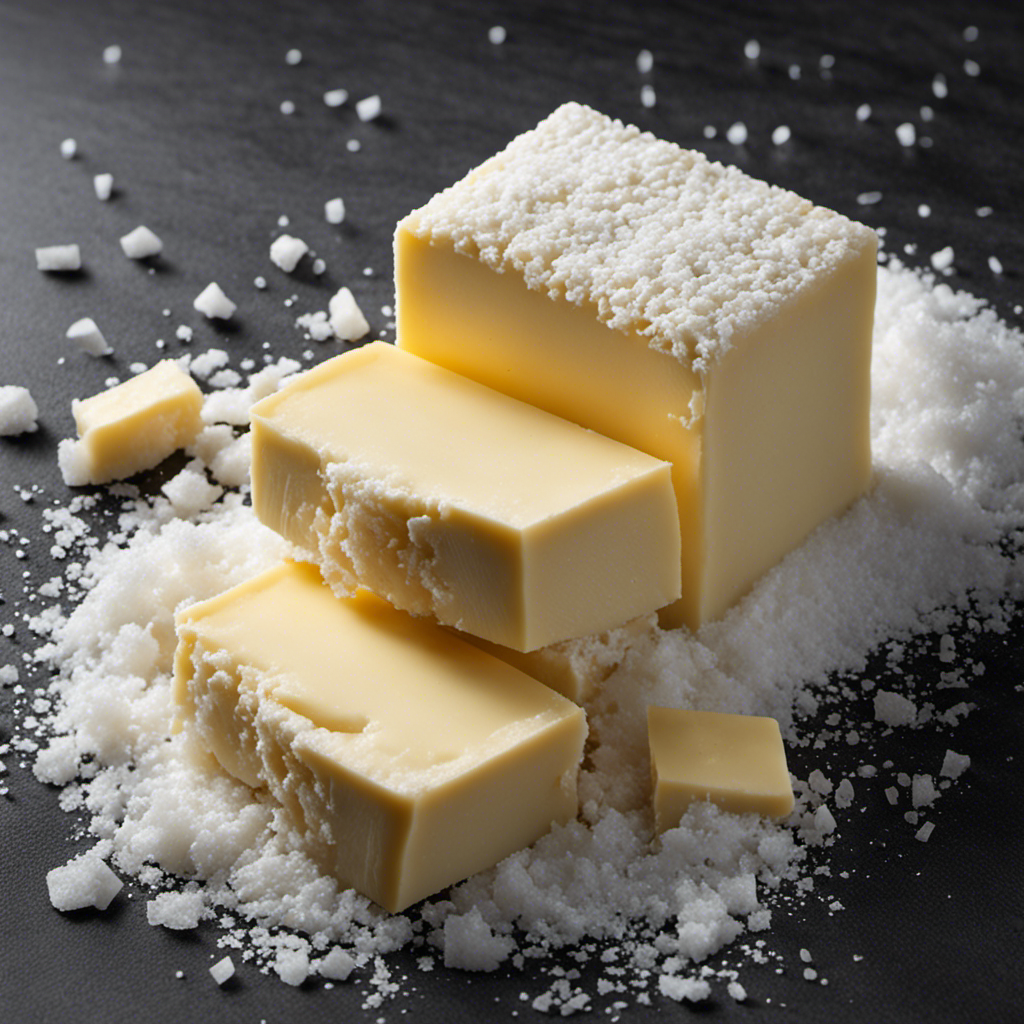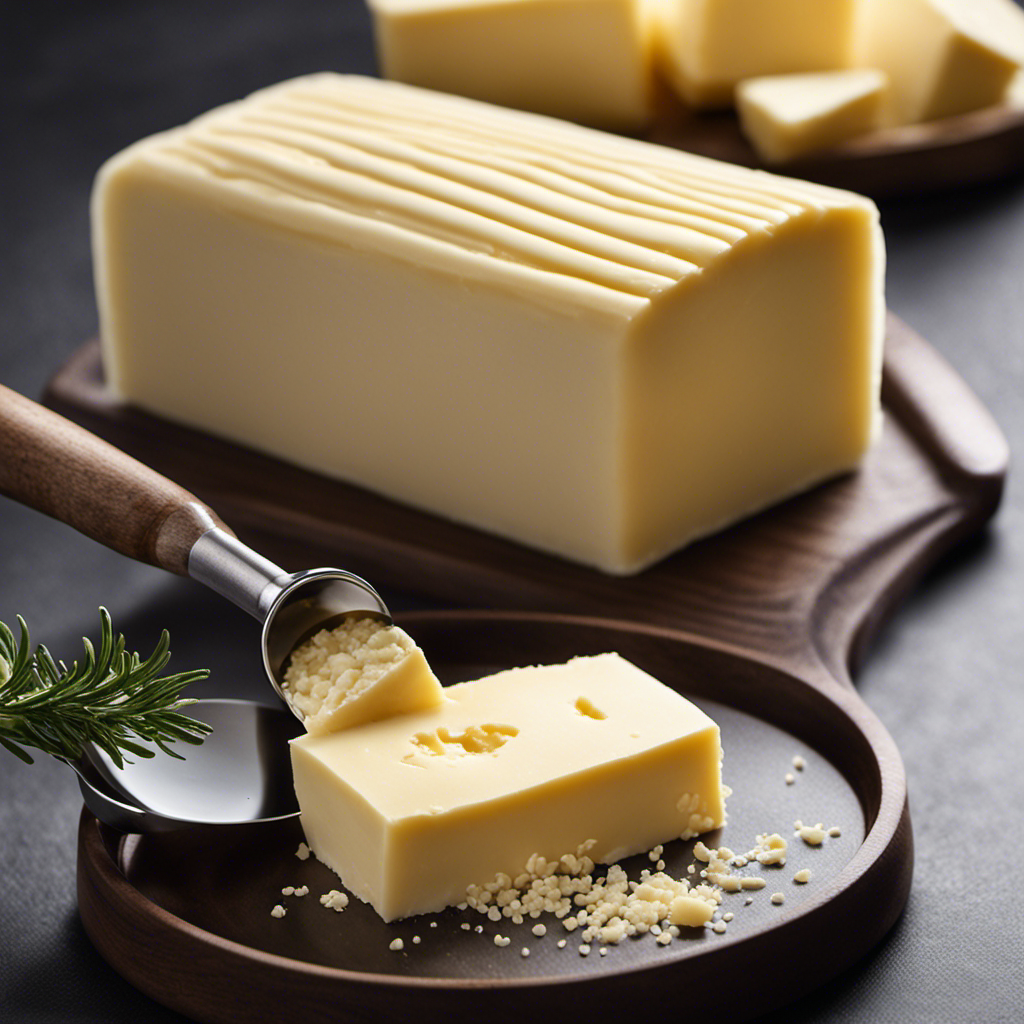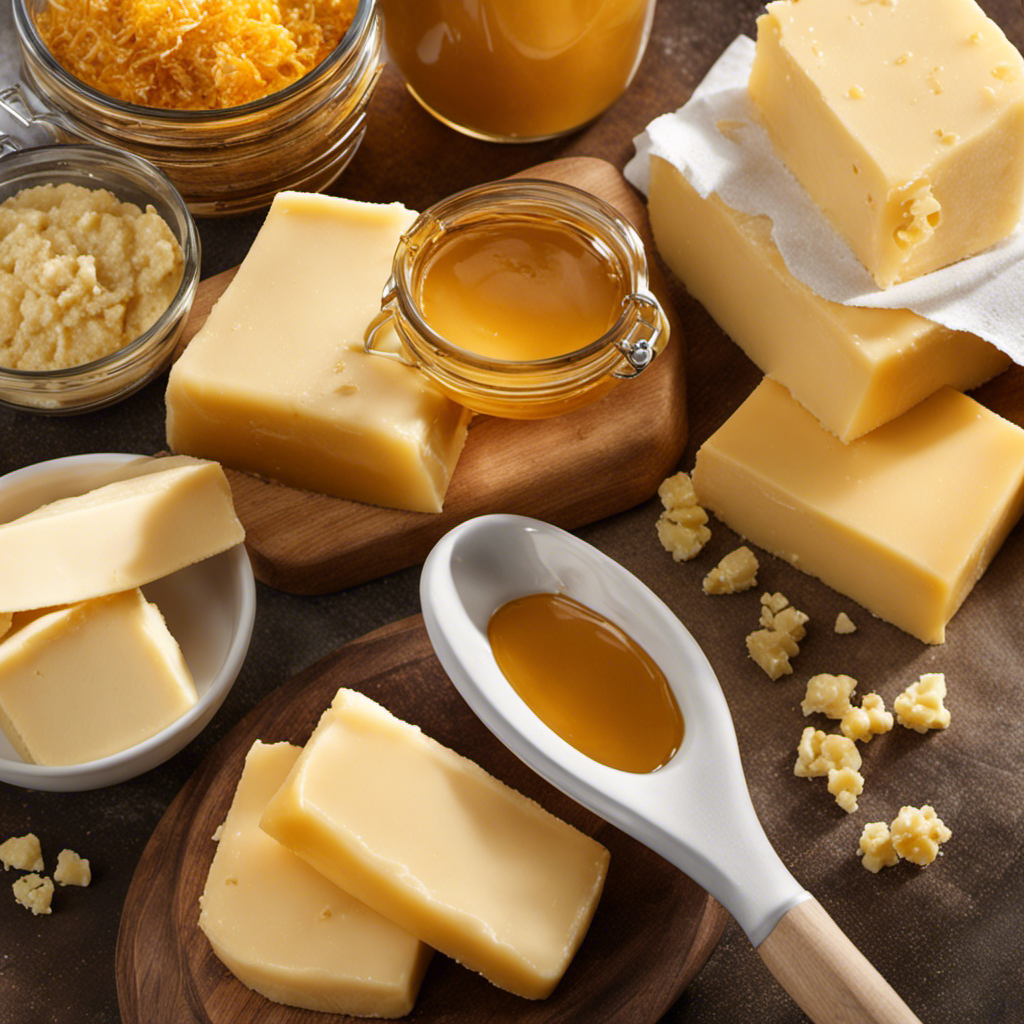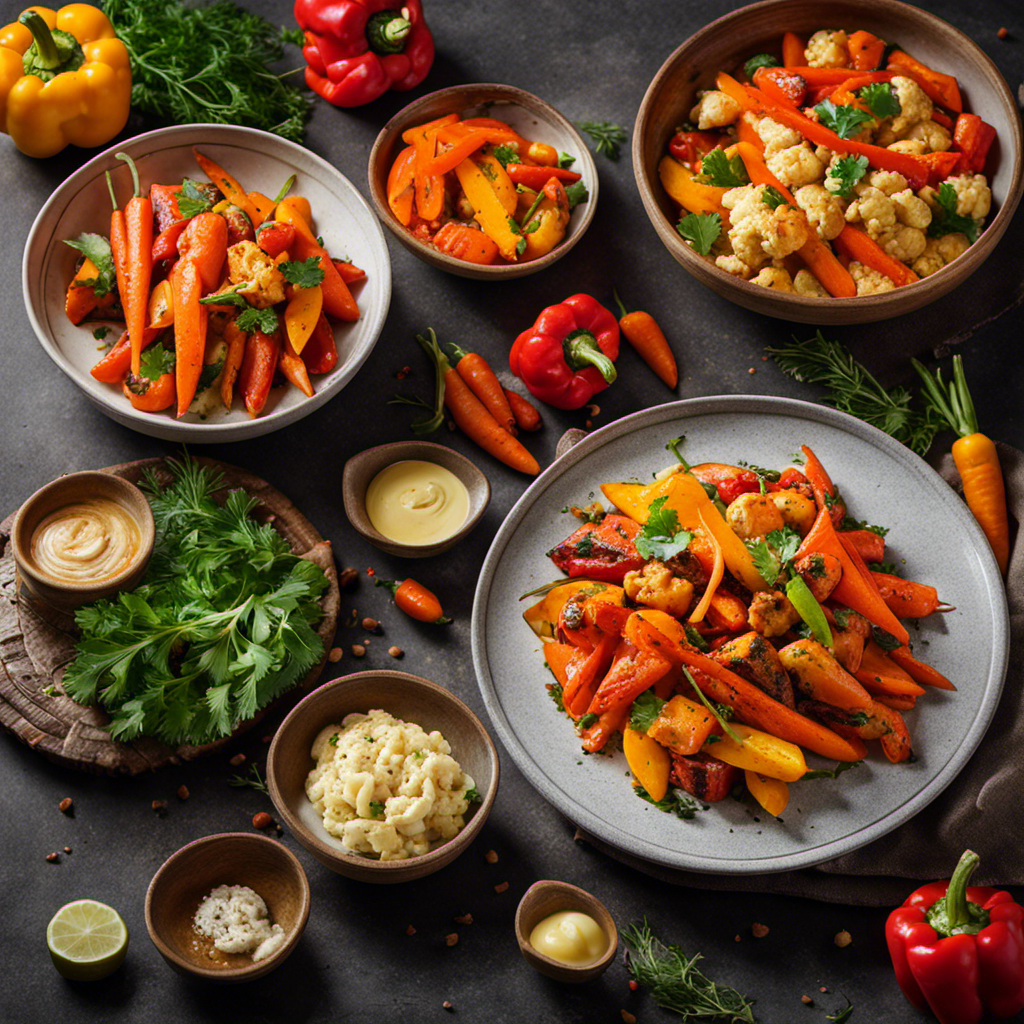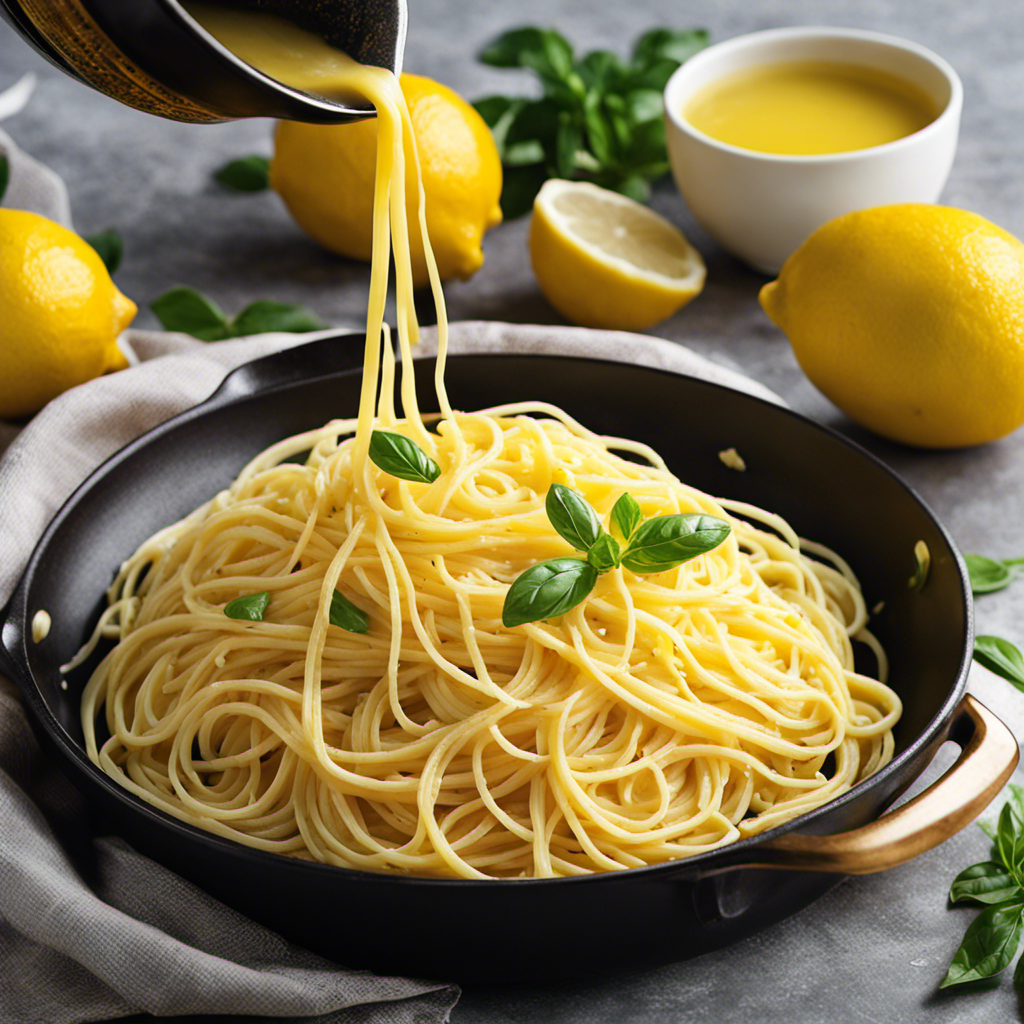I have always been a firm believer that the secret to a delicious dish is the perfect balance of flavors. In baking, salt is essential for elevating the taste and highlighting the beauty of our creations.
But what happens when we only have unsalted butter on hand? How much salt should we add to achieve that perfect balance?
In this article, we’ll dive deep into the science behind salt in baking and explore different ratios to help you create mouthwatering treats every time.
Key Takeaways
- Salted butter already contains salt, providing convenience and saving time.
- The recommended salt ratio for unsalted butter is 1/4 teaspoon per 1/2 cup of butter, but it can vary depending on personal preference and recipe.
- Experimentation and tasting are essential in finding the perfect balance of salt in recipes.
- Gradually adding small amounts of salt and regularly tasting the dish are best practices for achieving the desired flavor balance.
Understanding the Importance of Salt in Baking
I’ve learned that adding salt to baking recipes is crucial for enhancing the flavors and achieving the right balance of sweetness. When it comes to baking, using salted butter can have several benefits.
Firstly, salted butter already contains salt, which means you don’t have to worry about adding extra salt to your recipe. This can save you time and effort.
Additionally, salted butter can enhance the overall taste of your baked goods by adding a subtle savory note that complements the sweetness.
On the other hand, there are common misconceptions about using unsalted butter in baking. Some believe that unsalted butter is tasteless, but in reality, it allows you to control the amount of salt in your recipe, giving you more control over the flavor profile.
Ultimately, the choice between salted and unsalted butter depends on personal preference and the specific recipe you’re working with.
How to Calculate the Right Amount of Salt for Unsalted Butter
To calculate the proper salt ratio for unsalted butter, I usually rely on my taste buds and adjust accordingly. However, there are some general guidelines and salt measurement techniques that can help determine the right amount of salt to add.
The recommended salt ratio for unsalted butter is about 1/4 teaspoon of salt per 1/2 cup (1 stick) of butter. This ratio can vary depending on personal preference and the recipe being used. It’s important to note that too much salt can overpower the other flavors in the dish, while too little can result in a bland taste.
Experimentation and tasting as you go can help you find the perfect balance. Additionally, using fine-grain salt is recommended as it dissolves more easily and evenly into the butter.
Experimenting With Different Salt-To-Butter Ratios
Experimenting with various ratios of salt to unsalted butter has allowed me to discover the perfect balance of flavors in my dishes. When it comes to the salt to butter ratio, finding the right amount is crucial in enhancing the overall taste of a dish.
I’ve found that a ratio of 1/4 teaspoon of salt per 1/2 cup of unsalted butter works best for my recipes. This ratio provides just the right amount of saltiness without overpowering the other flavors.
It’s important to note that the impact of salt on the flavor profile can vary depending on the type of dish being prepared. For example, a savory dish may require a slightly higher salt to butter ratio compared to a sweet or baked dish.
Tips for Adjusting Salt Levels in Recipes That Use Unsalted Butter
When adjusting the salt levels in recipes, it’s important to consider the overall flavor balance and make small increments to achieve the desired taste. To effectively adjust the saltiness, here are three tips to keep in mind:
-
Start with small additions: Adding salt in small increments allows you to gradually adjust the flavor without overwhelming the dish. This way, you can carefully control the saltiness until it reaches the perfect balance.
-
Taste as you go: Regularly tasting the dish as you add salt is crucial. This allows you to gauge how the flavors are developing and make adjustments accordingly. Remember, it’s easier to add more salt than to remove it once it’s been added.
-
Explore alternative seasonings: If you’re looking to reduce your sodium intake or experiment with different flavors, consider using alternative seasonings. Herbs, spices, and even citrus zest can add depth and complexity to your dish without relying solely on salt.
By following these tips, you can effectively adjust the salt levels in your recipes and achieve the desired flavor balance.
Now, let’s delve into the best practices for adding salt to unsalted butter.
The Best Practices for Adding Salt to Unsalted Butter
I find it helpful to gradually add small amounts of salt to achieve the desired flavor balance when using unsalted butter.
Salt plays a crucial role in savory dishes, as it not only enhances the overall taste but also brings out the flavors of other ingredients. When added to unsalted butter, salt can transform a bland dish into a flavorful masterpiece.
The impact of salt on flavor profiles is significant, as it can enhance sweetness, balance acidity, and even reduce bitterness. However, it’s crucial to add salt in moderation, as too much can overpower the dish and make it overly salty.
Frequently Asked Questions
What Are Some Common Recipes That Use Unsalted Butter?
Common recipes that use unsalted butter include cookies, cakes, and pastries. Alternatives to unsalted butter include margarine or vegetable shortening. These ingredients can be used in equal amounts as a substitute in most recipes.
Can I Substitute Unsalted Butter With Salted Butter in a Recipe?
Yes, you can substitute unsalted butter with salted butter in a recipe. However, keep in mind that salted butter already contains salt, so it will impact the overall flavor of the dish. Adjust other seasonings accordingly.
How Does the Salt Content in Unsalted Butter Affect the Taste of Baked Goods?
The salt content in unsalted butter significantly affects the taste of baked goods. It is essential in achieving precise seasoning and balancing flavors. The careful measurement of salt is crucial for achieving the desired overall flavor in recipes.
Are There Any Health Benefits to Using Unsalted Butter?
Using unsalted butter has benefits for heart health. Compared to salted butter, unsalted butter has lower sodium content, which can help reduce the risk of high blood pressure and cardiovascular disease.
Can I Add Salt to Unsalted Butter After It Has Been Melted?
Yes, you can add salt to melted unsalted butter. However, the amount of salt needed will depend on personal preference. It is recommended to start with a small amount and gradually add more until desired taste is achieved.
Conclusion
In conclusion, understanding the importance of salt in baking is crucial for achieving the perfect balance of flavors. By calculating the right amount of salt for unsalted butter and experimenting with different ratios, you can enhance the taste of your baked goods.
Remember to adjust salt levels in recipes accordingly and follow best practices when adding salt to unsalted butter. With these tips, you’ll be able to create mouthwatering treats that will leave everyone wanting more.
So, go ahead and sprinkle that pinch of salt to elevate your baking game!
